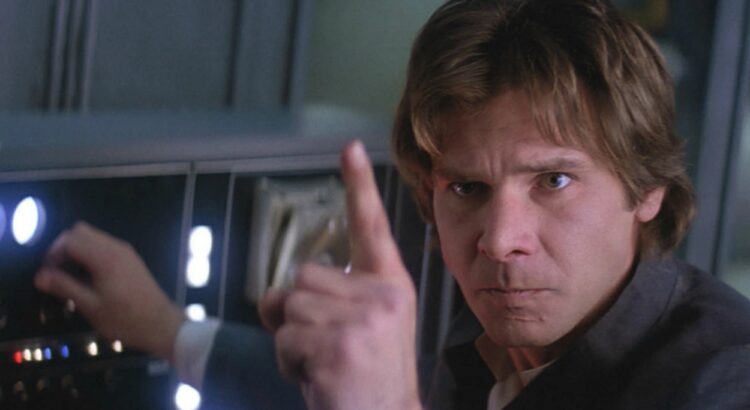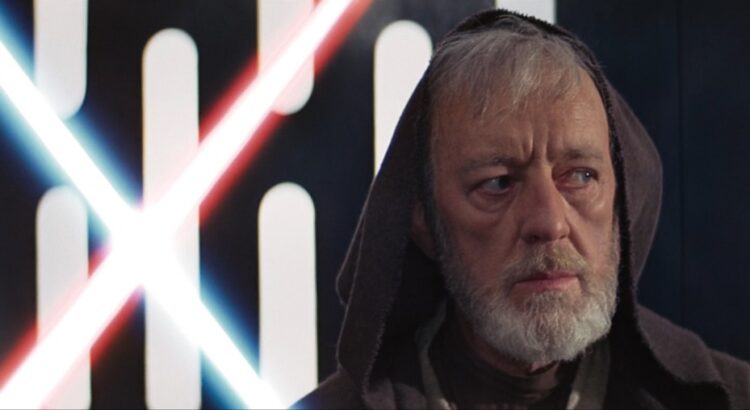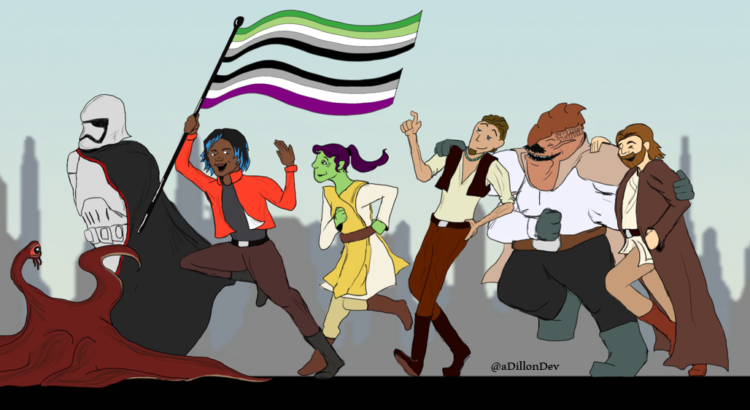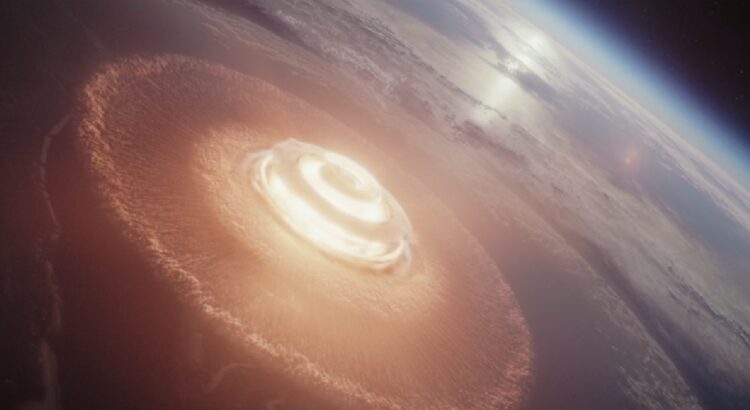After ten full years of operation, Eleven-ThirtyEight has officially ceased publication and now exists solely as an archive, so that our many great pieces of writing can continue to be enjoyed in the future. Head here for more on the history of and thinking behind this decision, and we thank you for your readership.

What We Fight About When We Fight About Star Wars
What is the point of Star Wars?
When I launched Eleven-ThirtyEight ten years ago, I thought I had the answer, though it would take another eighteen months for me to articulate it.
“When Luke Skywalker throws his lightsaber aside and refuses to kill his father, that’s not just Luke’s crowning moment—that’s the point. Only this expression of ultimate compassion has the power to bring Anakin back to himself, and the fact that the apotheosis of a series with “Wars” in the title is the two main characters throwing their own lives away out of love for each other cannot be overstated.”
Me, In Everything Disney Needs to Know, It Can Learn from Luke Skywalker
These days, I think it’s a little more complicated than that. Don’t get me wrong—if you asked George Lucas that’s probably about how he’d put it, and indeed he said as much to Charlie Rose around the same time:
“…everybody expresses it differently but it’s still, basically, don’t kill people, and be compassionate and love people. And so that’s basically all Star Wars is.”
George Lucas on The Charlie Rose Show, October 23, 2014
Luke’s refusal to kill his father is rewarded by said father saving his life, and for doing so at the cost of his own life Anakin is rewarded with nothing less than immortality—the very thing he’d gone to the dark side looking for. By choosing to end the stories of his two main characters this way, Lucas constructed Star Wars to articulate one specific idea: only through selflessness may we live forever.
Star Wars isn’t just an epic adventure story, it’s an argument by other means—an assertion of what Lucas had concluded was a universal human value. But after more than a decade without him at the helm, I’ve come to believe that he captured something even more universal than that. His galaxy’s unparalleled popularity around the world is due not to our ability to recognize and agree with his specific point of view, but to our ability to find within it that which we already believe. Whether the story intends as much or not.
Divorced from the whims of one quirky experimental filmmaker and given over to the expectations of Disney’s shareholders, the Galaxy Far, Far Away’s core functionality now stands revealed, for both good and ill: it’s a superficially-awesome blank slate. Freed of real history, real culture, even real physics, it’s a platform for stripping a storyteller of all artifice and revealing their core beliefs. It’s a story we tell ourselves about ourselves.
And I don’t know if you’ve noticed, but there’s not a lot of universal agreement about that these days.
Read More
Looking Back and Letting Go: When Star Wars Just Isn’t Doing it For You Anymore
It’s not easy saying goodbye to something that’s been a significant part of your life for a significant part of your life. But sometimes, it might be the healthiest choice. No, I’m not talking about the upcoming closure of this website – although this is Eleven-ThirtyEight’s penultimate article – but instead, an all-consuming interest in Star Wars itself. Burnout is real, fatigue is real – and sometimes the best way to preserve your joy is to take a step back, at least for a while.
For most things, it’s easy. If I’m feeling let down by Marvel movies, or if a TV show feels more like a chore than something fun – it’s easy enough to drop it. For many people, that’s just what Star Wars is too: a fun thing to engage with sometimes. For people who are invested, dedicated to a “fandom” – that level of engagement might be different. The desire to read everything, watch everything, and talk about everything can be all-consuming. Usually, people do this because they love it – it’s energizing and fun. But sometimes it gets exhausting, and you need a break. Or at least, you need to re-evaluate what’s happening to you.
Breaks can be a good thing. In the years before ETE was founded, I was on a break with Star Wars. The Bantam era, New Jedi Order, and prequel trilogy were the high-water marks of my engagement with Star Wars – and there was a lethargy to the franchise in the years afterward. The books of the Legacy era irritated me more than I enjoyed them, so I made the choice to step back, and only read the books that actually excited me: a handful of amazing reference books like the Essential Atlas or Essential Guide to Warfare, or one-off books like Shadow Games. That break was very healthy for me – and I ended up fresh and energized for the new era of Star Wars storytelling that began in the fall of 2014.
The glow of the sequel era and the halcyon days of the early new canon have ended, overshadowed by incessant online toxicity and generally anemic onscreen storytelling. Publishing has always been the center of my engagement with Star Wars, but even there I feel a growing disconnect. There are still things that spark joy: Visions, Andor, Ronin, parts of The High Republic. There are still moments of magic – as much as I criticize nostalgia for nostalgia’s sake, nothing will never surpass the joy I felt seeing Vivien Lyra Blair’s young Leia for the first time. There are still things I look forward to: From a Certain Point of View: Return of the Jedi is not far away, and the idea of bringing new voices and new perspectives to Star Wars has been something I’ve loved from the beginning. But other times? I’m not feeling it – and I want to talk about why.
Read More
The Point to Which Their Striving Leads – The Journey of Aromanticism and Asexuality in Star Wars
I would love to say that it began with the second article I wrote for Eleven-ThirtyEight. I would love to say that it began with From a Certain Point of View. I love to say that “The Baptist” was our first aromantic and asexual representation in Star Wars. Though Omi is as alien as you could get – the dianoga of the trash compactor in A New Hope – the manner in which Nnedi Okorafor wrote her and her sexuality is dignified. Noble, even.
Unfortunately, the novel Phasma beat “The Baptist” to publication by little over a month. Within the novel, Phasma was described as never having been interested in relationships with men or women. It would be frustrating enough that our first aro/ace character was a villain, as a common microaggression against aro and ace people is interpreting our lack of attraction as a lack of compassion. But there were ways that this could have still worked. There are ways to make aro/ace villains that are compelling. What makes Phasma sting as our first aro/ace coding in Star Wars canon[1]Any potential aro/ace coding in Legends is another discussion. is the fact that the novel leans into that microaggression.
This lack of relationships is noted within the context of someone reflecting on how much crueler and more ruthless Phasma is, specifically in contrast to sympathetic characters who have partners. While I presume that author Delilah S. Dawson did not intend to say that Phasma is immoral because she is aro/ace, the framing nevertheless sends that message.
An inauspicious beginning for our representation. But far, far from the end.
Over the six years I’ve been writing for Eleven-ThirtyEight, many of my articles have focused on exploring aromantic and asexual representation and coding within Star Wars. We have come a long way over those years, and as the site closes its doors, this – my final article – will look back on the journey and ahead to new frontiers.
Read More
| ↑1 | Any potential aro/ace coding in Legends is another discussion. |
|---|

Rogue One, Andor, and the Storytelling Power of Real Physics
One thing that distanced Star Wars from other science fiction of its era was the aesthetic choice to make its universe feel truly lived-in, where many elements that would otherwise be fascinating and futuristic were shown full of dirt and dents, and treated as ordinary and utilitarian. We’re supposed to get the sense that the characters experience these things every day, and are not dazzled by ray guns, vehicles that defy gravity, or space travel. Most of the time, those are just set dressing, parts of the landscape, and not the focus of the story. And for that reason, painstaking attention was paid to the details of every set, prop, and matte painting to make sure everything looked believable, approaching the process more like a recreation of a historical period than a display of fantastical elements. This has had a surprising consequence: as I’ve observed several times, when you account for the technologies that exist in-universe, Star Wars tends to have better physics in its visual effects than other franchises with more science-abiding reputations.
When depicting an armed revolution against a tyrannical regime in this setting, making sure the non-fantastical elements still follow the laws of physics makes everything much more grounded, and the stakes more realistically felt. And in order to tell a story of hope in the face of insurmountable odds, where the enemy’s goal is to convince an entire galaxy that any attempt at resistance will only bring doom and overwhelming loss, being able to convey the full magnitude of the threat becomes essential. Directed by Gareth Edwards, known for his ability to imbue his films with a clear sense of scale, Rogue One was a magnificent achievement in this regard. Every time I have advocated for taking the physical implications and consequences of some plot device or visual element into account, and explained how it can actually enhance the storytelling, this is exactly what I’ve meant. Rogue One exceeded all my expectations, and they were already high.
Read More